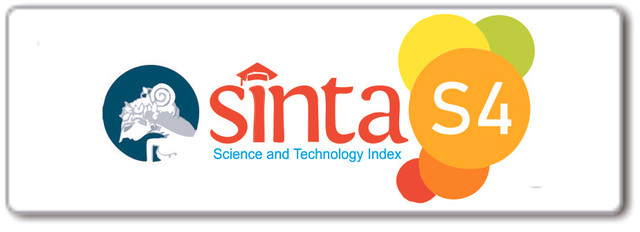Analysis of coliform bacteria contamination in drinking water refill in Ambon City
Abstract
In recent years, refillable drinking water businesses have grown rapidly in several cities in Indonesia, including Ambon City. On the one hand, Refillable Drinking Water Depots (DAMIU) support efforts to realize a healthy society by expanding the reach of clean water consumption, On the other hand, DAMIU tend to be problematic when faced with business interests. Feces contain coliform bacteria which is an indicator of water contamination. This study aims to determine the presence of coliform bacteria in Ambon City. The samples used in the study came from three sub-districts of refill drinking water depot sources, namely the Teluk Dalam sub-district, Nusaniwe sub-district, and Baguala sub-district. Microbiological testing of refill drinking water using MPN (most probable number) method. The MPN test results showed that three refill drinking water samples were not contaminated with coliform bacteria because there was no turbidity or gas formation in the Durham tube for gas-forming bacteria. This indicates that the three refill drinking water samples tested microbiologically have good quality and are safe for consumption, because in 100 ml of water no coliform bacteria were found in accordance with Permenkes No. 492/Menkes/Per/IX/2010 regulations on the requirements and supervision of water quality, which states that the microbiological requirements for drinking water are MPN Coliform /100 ml sample = 0. There are no coliform bacteria in the refillable drinking water depot in Ambon City so the water is suitable for consumption
Downloads
References
Askrening, A., & Yunus, R. (2017). Analisis bakteri Koliform pada air minum isi ulang di Wilayah Poasia Kota Kendari. Jurnal Teknologi Kesehatan, 13(2), 71-76. https://doi.org/10.29238/jtk.v13i2.9.
Bambang, A. G., Fatimawali., & Kojong, N. S. (2014). Analisis cemaran bakteri coliform dan identifikasi Escherichia coli pada air isi ulang dari depot di Kota Manado. Pharmacon, 3(3), 325-334. https://doi.org/10.35799/pha.3.2014.5450
Byna, S., Krisdianto., & Nur, H. S. (2009). Kajian kualitas air sungai yang melewati Kecamatan Gambut dan Aluh aluh Kalimantan Selatan. Bioscientae, 6(1), 40-50. https://doi.org/10.20527/b.v6i1.171
Departemen Kesehatan Republik Indonesia. (2002). Syarat–syarat Pengawasan Kualitas Air Minum PerMenkes RI No.907/Menkes/SK/VII/2002. DepKes RI. Jakarta
Latuconsina, V., & de Lima, F. (2020). Gambaran kualitas air minum isi ulang di Kota Ambon. Molucca Medica, 12(2), 23-31. https://doi.org/10.30598/molmed.2020.v13.i2.23
Latuihamallo, J., & Putuhena, J. D. 2016. Analisis nilai guna hutan sebagai penyedian air bersih dan implementasi PES (Payment for Ecosystem Service) bagi pemilik dusun di Hutan Lindung Gunung Sirimau Kota Ambon. Jurnal Hutan Pulau-pulau Kecil, 1(1), 44-52. https://doi.org/10.30598/jhppk.2016.1.1.44
Menteri Kesehatan Republik Indonesia. (2010). Peraturan Menteri Kesehatan Republik Indonesia Nomor.492/MENKES/PER/IV/2010 tentang Persyaratan Kualitas Air Minum.
Mukhlis, H., & Rini, A. M. 2019. Angka coliform dan colifecal depot air minum isi ulang. Skripsi. Universitas Riau.
Natalia, L. A., Bintari, S. H., & Mustikaningtyas, D. (2014). Kajian kualitas bakteriologis air minum isi ulang di Kabupaten Blora. Life Science. 3(1), 31-38.
Pratiwi A.W. (2007). Kualitas bakteriologis air minum isi ulang di wilayah kota bogor. Jurnal Kesehatan Masyarakat Nasional. 2(2), 120-131. https://doi.org/10.21109/kesmas.v2i2.271
Rosita, N. (2014). Analisis kualitas air minum isi ulang beberapa Depot Air Minum Isi Ulang (DAMIU) di Tangerang Selatan. Jurnal Kimia Valensi, 4(2), 134-141. https://doi.org/10.15408/jkv.v0i0.3611
Sampulawa, I., & Tumanan, D. (2016). Analisis kualitas air minum isi ulang yang dijual di Kecamatan Teluk Ambon. Arika, 10(1), 41-56.
Shodikin, M. A. (2007). Kontaminasi bakteri Koliform pada air es yang digunakan oleh pedagang kaki lima di sekitar kampus Universitas Jember. Jurnal Biomedis, 1(1), 26-33.
Sudiana, M. I. & Sudirgayasa, G. I. (2020). Analisis cemaran bakteri Koliform dan Eschericia coli pada depot air minum isi ulang (DAMIU). Jurnal Kesehatan Bakti Tunas Husada: Jurnal Ilmu-ilmu Keperawatan, Analis Kesehatan dan Farmasi, 20(1), 52-61. http://dx.doi.org/10.36465/jkbth.v20i1.553
Susana, T. (2003). Air sebagai sumber kehidupan. Oseana, 28(3), 17-25.
Trisnaini, I., Sunarsih, E., & Septiawati, D. (2018). Analisis faktor risiko kualitas bakteriologis air minum isi ulang di Kabupaten Ogan Ilir. Jurnal Ilmu Kesehatan Masyarakat, 9(1), 28-40. https://doi.org/10.26553/jikm.2018.9.1.28-40
Waluyo L. (2009). Mikrobiologi Lingkungan. UMM Press: Malang
Pirsaheb, M., Sharafi, K., Ahmadi, E., & Moradi, M. (2017). Prevalence of the waterborne diseases (diarrhea, dysentery, typhoid, and hepatitis A) in West of Iran during 5 years (2006-2010). Annals of Tropical Medicine and Public Health, 10(6), 1524. https://doi.org/10.4103/ATMPH.ATMPH_493_17

Copyright (c) 2023 Monica Nikijuluw, Mery Pattipeilohy, Ferymon Mahulette

This work is licensed under a Creative Commons Attribution-NonCommercial-ShareAlike 4.0 International License.
Authors who publish with BIOEDUPAT: Pattimura Journal of Biology and Learning agree to the following terms:
- Authors retain copyright and grant the journal right of first publication with the work simultaneously licensed under a Creative Commons Attribution License (CC BY-NC-SA 4.0) that allows others to share the work with an acknowledgment of the work's authorship and initial publication in this journal.
- Authors are able to enter into separate, additional contractual arrangements for the non-exclusive distribution of the journal's published version of the work (e.g., post it to an institutional repository or publish it in a book), with an acknowledgment of its initial publication in this journal.
- Authors are permitted and encouraged to post their work online (e.g., in institutional repositories or on their website) prior to and during the submission process, as it can lead to productive exchanges, as well as earlier and greater citation of published work.








 This work is licensed under a
This work is licensed under a 